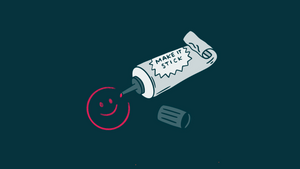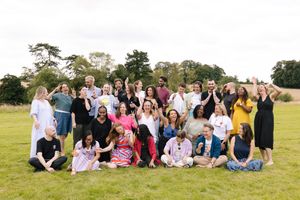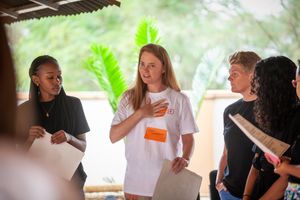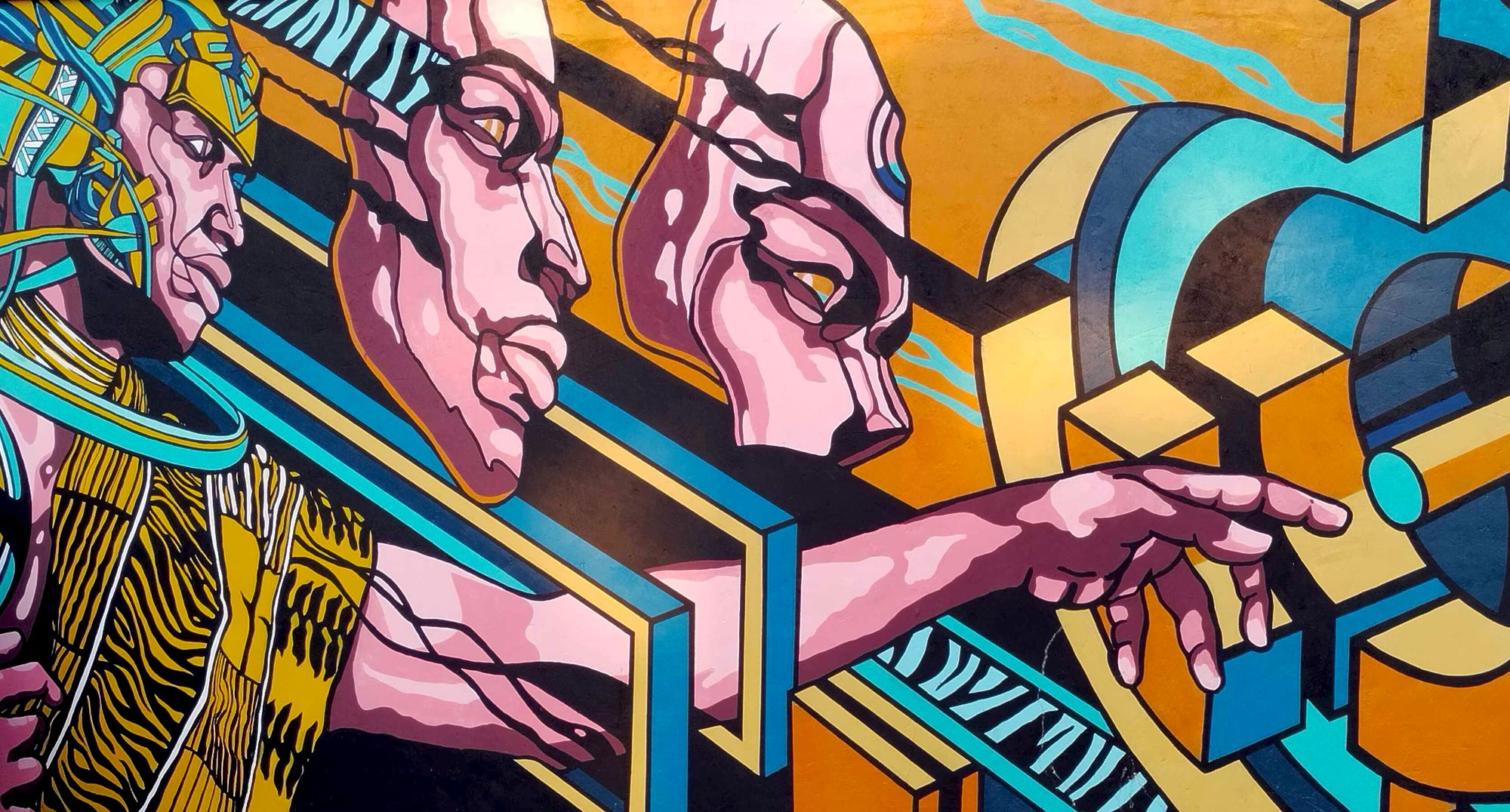
At Brink, we work with the building blocks of change and impact. Stories. Teams. Organisations. Collectives. Ideas. Money.
Each of these blocks stack up to enable big things to happen in the world. And that’s why they form the basis of our practices at Brink. Practices are our codified offers, an important part of how we organise ourselves and our work, and share what we do. Our venturing practice works with the building blocks of ideas and money. Both those who are growing new ideas, and the people funding or investing in them.
For centuries, but especially this century, we’ve seen how scaling ideas and directing funding flows have shaped our world. How would things be different if Facebook hadn’t grown to two billion users? Do we want a world in which Theranos — the fraudulent Silicon Valley blood testing startup — can raise $1.4bn, 82 times the equity investment in every company in Rwanda put together ($17m in 2021)? Where would we be if the US government hadn’t invested in DARPA, the “agency that shaped the modern world”, by funding and inventing precursors to the internet, GPS, and drones?
What gets invested in, and what scales, matters.
At Brink, we work every day to design funds, manage portfolios, and work side by side with partners to grow their ideas. So ideas and money can tackle the world’s biggest challenges, with clarity and courage.
There’s lots of organisations we admire doing similar work. So, why do we think it’s important for Brink to have a venturing practice?
It’s important, because we recognise that at the centre of every idea, portfolio and fund are people.
Venturing is a lever for profound, systemic change in the world, and we know that working on that lever means embracing the humans at the centre of it all.
Georgette, the Founder in Uganda scaling eyeglasses made for African faces. Asyia, the teacher turned funder, looking to make sure edtech reaches the world’s most marginalised children and actually helps them learn. Landry, the intrapeneur in the city of Seme-Podji, trying to make life fairer for his citizens. And the hundreds of others we have had the privilege to work with.
Understanding the biases, motivations, emotions, cultures and other factors at play in people is how we work, in our venturing practice and at Brink as a whole. We call this behavioural innovation, and it powers everything we do. In a nutshell: it’s innovation + people.
Let’s dive into what that means in the real world.
Building a fund to give children access to oxygen
Every year, 4.2 million children with severe pneumonia in low and middle-income countries (LMICs) need oxygen to survive.
Working with IMC Worldwide and with funding from the UK Foreign, Commonwealth & Development Office (FCDO), we’re designing a fund to answer this entrenched problem. It’s called the Oxygen CoLab, set up to improve access to medical oxygen.
Why CoLab? The ‘Co’ signals our emphasis on people coming together, making change stick. The ‘Lab’ speaks to our focus on rigorous experimentation and user centred design. CoLabs go beyond giving out money and hoping some ideas work. We’re deliberate in directing funding towards the most impactful part of a system, working closely to develop those ideas, and bringing a big mix of people to the table.
The Oxygen CoLab worked with UNICEF, local communities, NGOs, academic institutions, manufacturers, and engineers. Together, this partnershsip accelerated the pace towards a Target Product Profile, a set of requirements for oxygen concentrators.
We’ve also piloted a new service model called oxygen-as-a-service in Tanzania and India.
In Tanzania, FREO2 is trialling the provision of oxygen concentrators, oxygen delivery systems, pulse oximetres and a wrap-around service for a small monthly fee. This complete solution integrates product, installation, education and social enterprise. In six months, the team scaled to 12 under-resourced health centres across the rural northern part of Tanzania. Our hope is that the model can break even in 3–5 years.
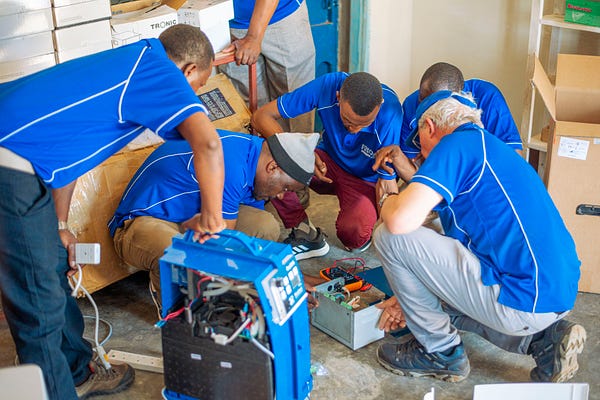
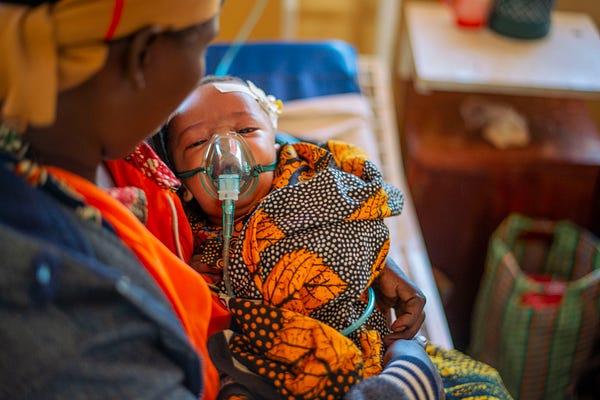
This work has catalysed product development in an under-supplied market. Next, we’re working with seven more innovators to accelerate their development and market traction.
The Sandbox: a space to prepare edtech for scale
Quick, what’s 54 minus 13?
In rural Pakistan, only 40% of grade 3 children (age 8–9) can answer that question.
Can you read the word ‘cat’?
In Malawi, less than 20% of grade 2 children (age 7–8) are able to.
We live in the midst of a global learning crisis, where even children going to school struggle with basic literacy and numeracy. And that was before the COVID-19 pandemic and school closures.
Brink is the Innovation partner on the EdTech Hub, partnering with Results for Developoment, Jigsaw, Open DevEd, and others. A big part of our work is to design and manage Sandboxes to try and scale impactful edtech ideas.
If we want to make a dent on the crisis, scale is the key word. We believe scaling well means an idea has to prove itself across a range of factors. Does the product ‘work’? Is it aligned to national curricula and systems? Can the tech be maintained? Do people engage with it? Does it have a sustainable revenue model? And most importantly, does it actually improve a child’s reading and writing?
Sandboxes happen in districts or regions, where we experiment and learn about answers to these questions in a contained, real-world context.
In Malawi, we set the blueprint for scaling personalised learning software in Malawi by testing in a small batch of schools. Through experimenting with different approaches, we developed a logistics plan and drove down cost per year per child from $30 to $6.
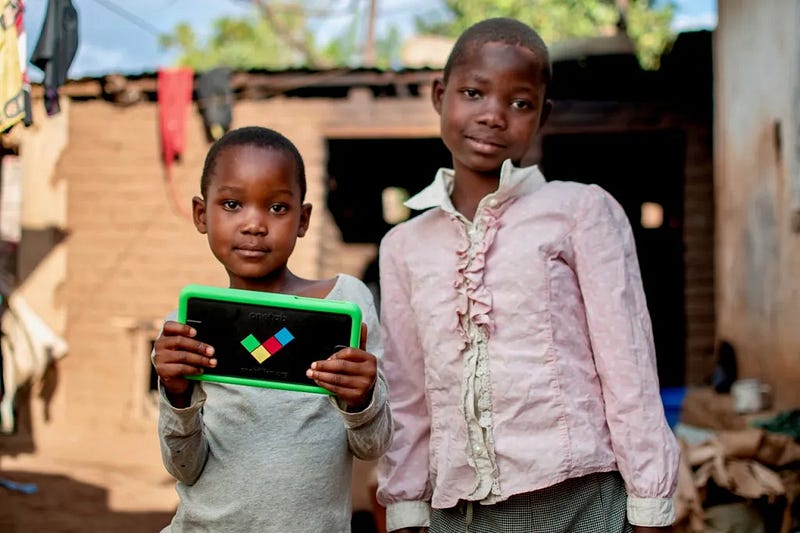
In Kenya, we worked with a small group of caregivers to foster learning at home. The toolkit — which pivoted to focus on caregiver confidence — is now embedded in the Kenyan government’s Institute for Curriculum Development.
And we’re working in Bandarban, a region of part of Bangladesh marginalised by ethinicity, language, geography and infrastructure. Testing what edtech works here, so it can scale equitably across Bangladesh.
Sandboxes invest our time and money into places and problems. We bring a toolkit, a team and mindset to tackle big challenges within particular education systems.
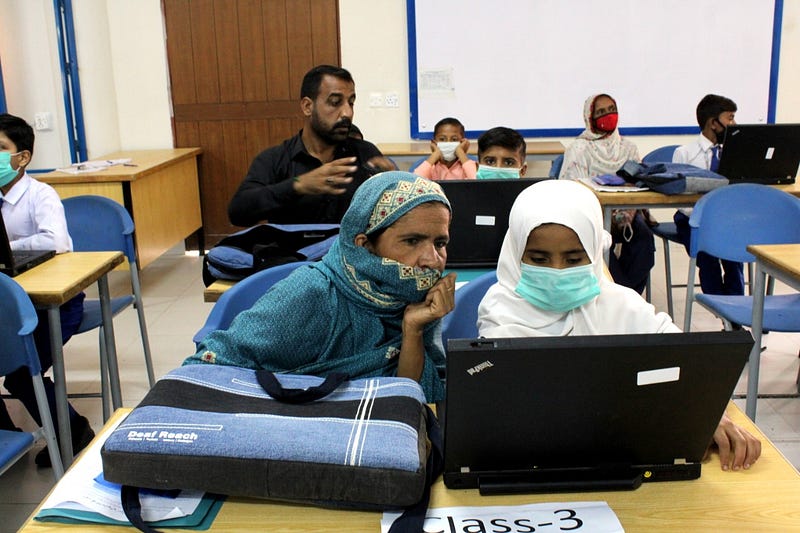

What exponential impact could we achieve, if we find and scale EdTech that works?
A fund for people with disabilities: for now, and for the future
The status quo isn’t working for people with disabilities.
According to the WHO, 90% of people who need an assistive technology device (like eyeglasses, hearing aids, wheelchairs and prostheses) can’t access one. For those who get access, 78% end up abandoning it. In sub-Saharan Africa, assistive tech devices are expensive, poor quality, and contextually inappropriate. NGOs who distribute them rely on grant funding, which can be unsustainable. Commercial capital is scarce in the sector, and there’s very few examples of sustainable business models operating at scale.
Global Disability Innovation (GDI) Hub, BFA Global and Brink founded the Assistive Tech Impact Fund in response to these challenges. It provides funding of between £100–300k and 6 months of venture building support to assistive tech ideas. Our focus is ideas that have achieved product-market fit and are looking to sustainable scale.
Above all, we’ve designed the fund to be “pro-sector”. This means investing in behaviours that will enrich the assistive technology space. Encouraging collaboration and partnerships. Promoting localisation of manufacturing, product development and service provision to sub-Saharan Africa. Building resilient business models, rather than ‘scaling to millions of users at any cost’. And championing success stories in our portfolio, to inspire founders and investors to pile into the nascent assistive tech space.
The fund has lived its creed. 3 out of the 5 ventures we supported were for-profit (a rarity in the sector), and all have gone on to raise follow-on investment (HearX, Wazi, and Koalaa) . To help others, we’ve published our key insights on scaling assistive tech ideas and a a map of assistive tech innovators in emerging markets.
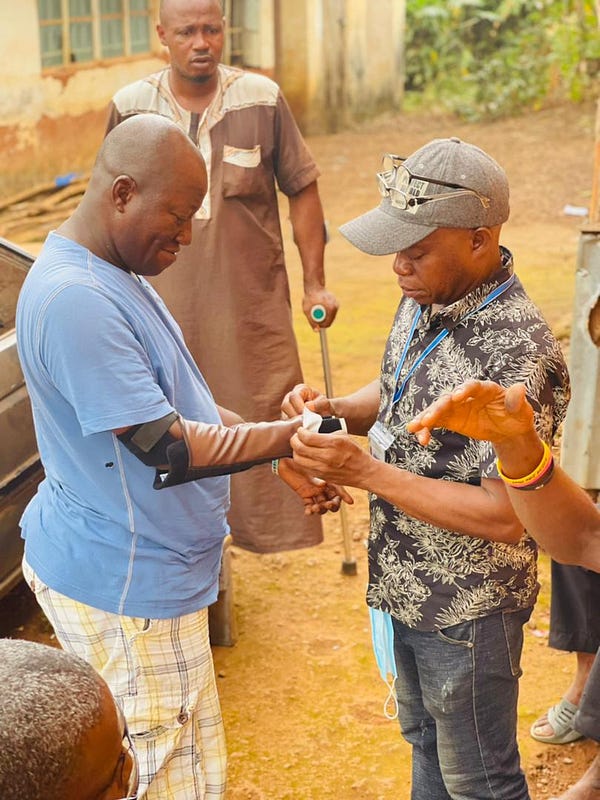

Sometimes, we say our fund’s thesis is “bigger than scaling products”: it’s about lifting up the sector. So money and ideas can better serve people with disabilities, after our fund has gone.

Helping cities grow ideas to help their citizens
Brink works with all types of ideas and people, coaching and hustling on their behalf to help them test, learn, grow and scale. Often it’s startups, or ideas within larger organisations.
Sometimes it’s a city, trying to grow an idea to improve its citizens’ lives.
Like the City of Kigali, in Rwanda.
Rwanda is experiencing a boom in tech investment, yet only 8.4% of its population can use a computer (according to the World Bank). How might we build the digital skills of those currently excluded from the benefits of tech?
We’re working hand-in-hand with Kigali’s city authority to test how ICT centres might solve this problem. They will provide access to computers, and free-of-charge training. Brink works with ideas like these as a partner on the Africa Smart Towns Network (ASToN), funded by the French Development Agency (AFD).

We’re mixing methods, bringing approaches like human-centred design, lean startup, and agile from the US. Working with intrapreneurs in municipal governments across Africa, we’ve seen how much they bring: in particular, a passion for problem solving on behalf of the people they serve, along with strong project mangement and delivery skills.
By coupling this with methods that support adaptivity and nimbleness, we support the pioneers we work with to make change in their organisations, and in their cities.
We’re also bringing a consideration of business models into the work.
For instance, by asking whether ICT centres can recover cost from commercial revenue, through services like printing.
How would the world be better, if cities in Africa could fund and scale their ideas like tech startups in the US and Europe?

Testing ‘wildcard’ ideas to solve big development challenges
South of Rwanda, is Zambia. A country 30 times bigger in km2, but with only 50% more people. There’s a lot of space, and getting from A to B isn’t always easy.
Anick is a dairy farmer we met in Zambia. Every day, she had to walk 7km from her farm to the depot with a 20 litre urn of milk.
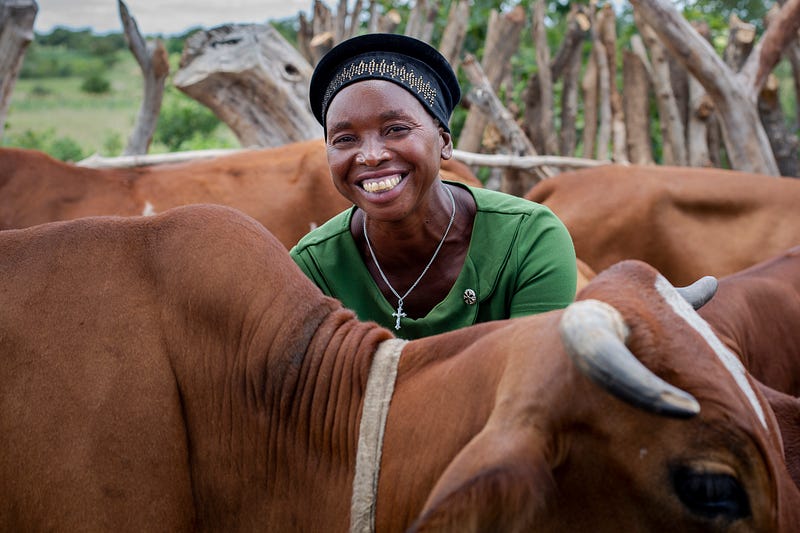
We’re working with Onyx Connect, a Zambian startup, to test and scale a pay-as-you-go bicycle scheme for people like Anick. Brink provides this support alongside Results for Development and IMC Worldwide as part of the Frontier Technologies Hub, a UK FCDO funded programme that provides seed funding of £100k to help (in)validate early-stage, untested solutions to big challenges in international development.
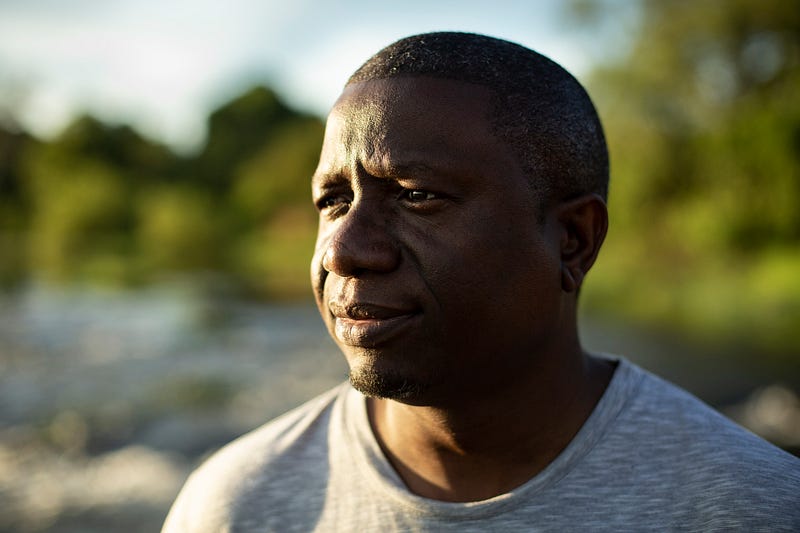
Early stage idea = a lot of uncertainty. A big part of our work is creating the scaffolding to navigate this uncertainty. We do this through lean and agile methods, and the psychological safety to reflect, learn, and adapt as a team. This is doubly important when working in a fund like this one, that supports very novel ideas.
Here’s an example of working through uncertainty. When we started, we’d assumed the European model for pay-as-you-go bikes, where you rent a ride by the hour. The low cost would attract users, or so we thought.
What we hadn’t realised was that ‘renting’ a journey was a foreign concept in Zambia. What you pay for, you should ultimately own. So strong was this sentiment, one bike shop owner told us how customers would buy bike parts — a wheel, a frame, handlebars — and put together a bike over time. Nobody ever thought to spend that money on renting a bike.
This meant we had to totally rethink our value proposition and business model. We switched to lease-to-own, with farming co-operatives (rather than individuals) as our new user. Sales soared. Since 2020. 2,300 bikes have been distributed across Zambia.
With a pay-as-you-go bike, Anick saves two hours each day. Or, she can take two journeys and sell twice as much milk, which is also fresher. She told us she’s doubled her income.
The work of the Onyx team has featured in the Guardian, and the BBC’s ‘People Fixing the World’.
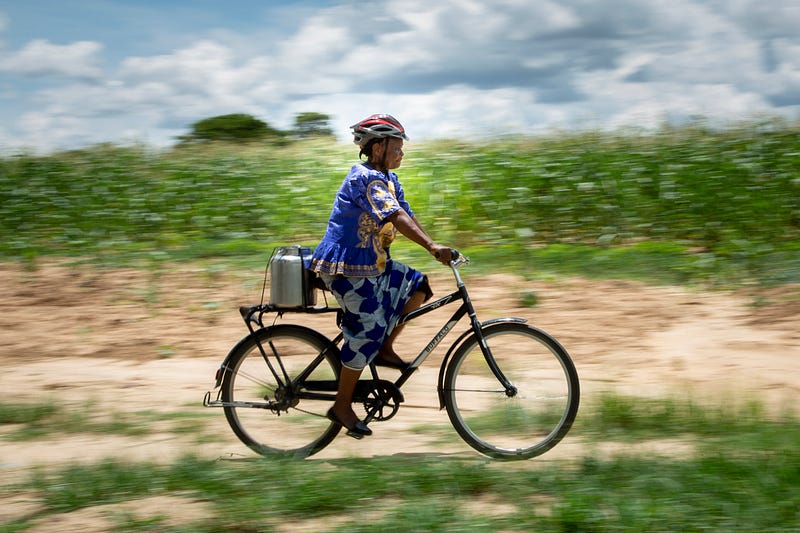
Labs that makes the case for investing in wellbeing
In partnership with the Wellcome Trust, we’ve created the Well_Lab.
Well Lab’s mission is to create “labs” for organisations to tackle workplace wellbeing and burnout. So no-one feels powerless in the face of their day at work.
In particular, we want to use a business-led approach to get evidence into the hands of business leaders, to help them take better care of their people. We talk about business resilience (not staff wellbeing). And we get research funded by Wellcome Trust on wellbeing off the page, and into the real world. Getting away from ‘quick fixes’ and perks towards ideas that actually make a difference.
Our first Lab worked with the NHS and focused on groups that don’t normally have time or the means to access existing wellbeing programmes, such as ambulance drivers. To zoom in on one idea, we created patient feedback forms to make ambulance drivers feel more valued. After promising early results, patient feedback form boxes have now spread to four hospital sites.
“I didn’t feel like I had much time to do anything about how I feel. I have got up in the morning and said, I can’t complete this day” (Ambulance Driver, NHS)
Check out this video of our work with Barts Health NHS Trust Ambulance Drivers and what wellbeing really meant for them (you’ll be surprised!).
Bringing together ideas and money, and the people who grow and invest in them, can take many different forms. Working with all three, combining the technical and the human, is what makes us tick. And what gives us a shot at making dents in the world.
If you want to chat about our practice, drop me a line on [email protected].
Look out for deeper dives into what it means to do venturing with a human lens, from me and my fellow adventurers at Brink.
